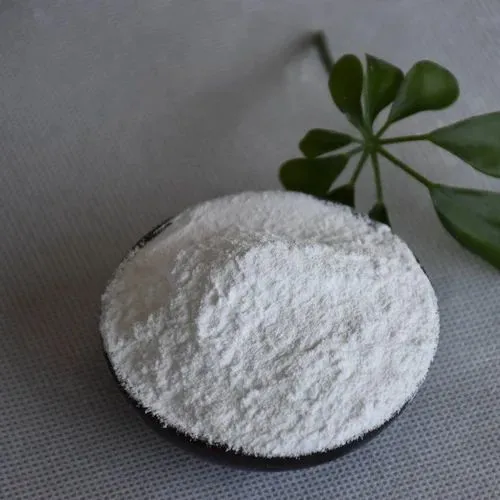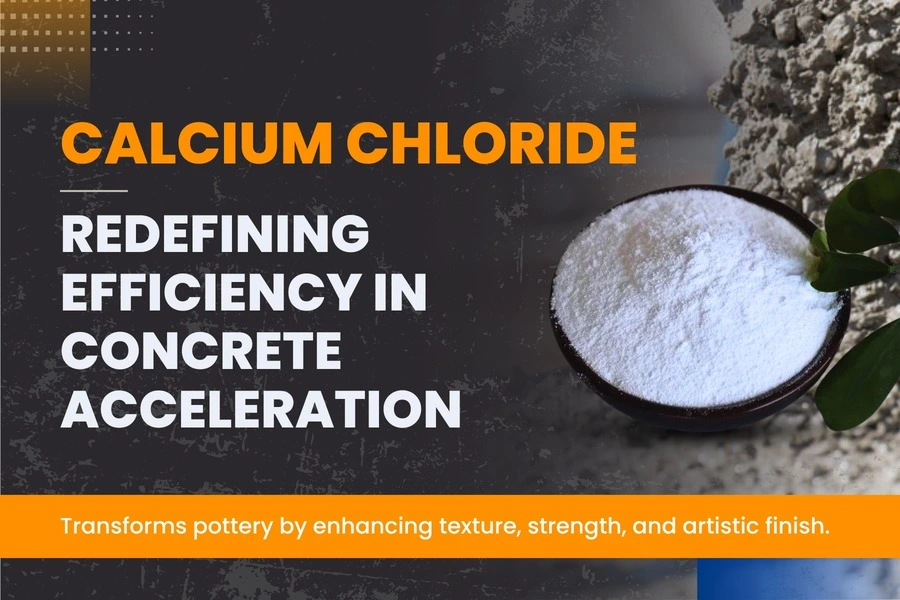Calcium Chloride (CaCl2) is the most widely used accelerator for cement because of its potency and level of purity. An estimated 9 billion cubic yards of concrete are produced annually. It is the second-most consumed substance in the world after water.
The temperature at which ready-mixed concrete sets begins at 70 degrees. This temperature effect is most pronounced in the range of 30 to 50 degrees.
Table of Contents
Calcium chloride is used to enhance the process of the ready-mix concrete in cold weather.
There is enhanced cement hydration when calcium chloride is added. It allows a concrete mixture to be made workable in icy conditions by warming it. The ready mix gains strength because of CaCl2, which gives it superior early strength.
The three-day strength shown in one day and the seven-day strength in three days. Calcium chloride keeps the workability of the ready mix. Using calcium chloride minimizes the quantity of water used.
It enhances strength but lowers labor and material costs. When it comes to quality, affordability, and reliability, CaCl2 is the optimal solution for cold-weather-ready combinations. This blog will cover the effects of calcium chloride on properties of concrete.
How Calcium Chloride is Added?
Calcium chloride can either be found as flakes, pellets, or other grains, or in solution form. The ordinary flake form has at least 77 percent of CaCl2, while the other forms, pellets, and other granular forms have 94 percent. It is advisable to use the solution form of calcium chloride since all forms of this mineral are soluble in water.
The cement sets pretty fast and therefore direct contact with the solution should be avoided. It is advised that it be diluted with water and then mixed with aggregate.
Effect of Calcium Chloride on Properties of Concrete

1. Effect on Physical Properties
1. Setting Time
Insetting concrete’s time ahead of time and finalizing time is greatly expedited by calcium chloride; this is mostly conducted as an accelerator for concrete. Due to early slab use and finishing, cold regions primarily use this technique.
However, it is not advisable to use this type of accelerator in hot weather, as it produces an excessively rapid setting of the concrete, making finishing and placing difficult.
These are basically based on the following standard rules of ASTM C494-1971 and CSA A266.2-1973: The first setting time for CaCl2 is now one hour before the reference concrete, not more than three [CSA] or three and a half [ASTM] hours.
2. Water Ratio with Cement
It is not anticipated that CaCl2 will result in substantial improvement in the concrete’s strength, as it does not decrease water demand by much to achieve a specific slump. As an accelerator, it will probably promote earlier stiffening, resulting in a reduction in bleeding.
3. Air Entrainment
In the case of calcium chloride’s use in concrete, air is not entrained. Rather, more air content can be developed in the same mixture with less air-entraining agent when calcium chloride is combined with other air-entraining agents.
4. Freeze Thaw Performance
Calcium chloride-containing concrete sets rapidly and provides early resistance against freezing and thawing damages. This can be especially important in winter concreting, where it might be exposed to early de-icing salt application. As it ages, the concrete containing calcium chloride may lose its ability to resist frost attack.
5. Dry Shrinkage
Calcium chloride cannot be taken away from having increased drying shrinkage; the extent of this effect varies depending on the kind of cement, curing time, environmental conditions, and the dosage of the calcium chloride.
6. Efflorescence
In some cases, CaCl2 causes a white layer to form on the surface of cured concrete. However, under normal exposure conditions, it attracts water and does not cause efflorescence like other salts would. White deposits must be removed with diluted hydrochloric acid because they are insoluble in water.
2. Effects on Chemical Properties
1. Sulphate Attack
Calcium chloride will cause the concrete in the presence of sulphate solutions to fail. The sulphates react with calcium and aluminum ions in the cement paste to form calcium sulphate and calcium sulphoaluminate hydrates. The studies show that the presence of calcium chloride decreases the resistance to sulfate attack.
2. Hydration Heat
In the presence of calcium chloride, hydration is generally accelerated and the heat of hydration increases quite substantially within the first 10 to 12 hours. The early setting observed will be beneficial in winter concreting although the total heat evolved practically remains unchanged.
3. Alkali-Aggregate Reaction
Certain aggregates experience swelling and can result in concrete breakage when a high alkali cement is used. Calcium chloride is said to accelerate the alkali-aggregate reaction present in concrete.
Expansion can be controlled wherein CaCl2 must be used in such instances using low alkali cement, pozzolan, or a non-reactive aggregate.
Corrosion of Reinforcement Steel
This stable layer which shields the steel from the outside world can only poorly be maintained in concrete that contains calcium chloride, allowing corrosion to occur.
Since this accelerated corrosion occurs in prestressed concrete because of the larger surface area of the wires and larger stress variations, calcium chloride is not allowed for prestressed concrete. It is also not advisable to use calcium chloride for steam-cured concrete.
Related Post: Understanding and Monitoring Corrosion in Steel Reinforced Concrete
3. Effects on Mechanical Behaviour
1. Compression Strength
With the use of calcium chloride as an accelerator, concrete sets quicker than otherwise. Strength must increase %125 over and above the general specimen when the concrete is three days old, in accordance with ASTM C-494, while after six months or a year, the standard is merely 90%.
There can be an increase in strength from 30 to 100% in three days compared with normal concrete and calcium chloride. Lower strengths result from excessive concentrations of calcium chloride over identified limits. For the same amount of chloride, strengths increase more in richer mixes.
At lower temperatures, calcium chloride shows a very graphic effect on the strength growth %.
Flexural Strength: When mixed with calcium chloride, compressive strength rises at a greater rate than flexural strength. ASTM C-494 states that flexural strength must not fall below 110% of the control specimen after three days of testing. After longer curing times, the flexural strength of concrete containing calcium chloride may actually be less than that of the control specimen.
Shrinkage and Creep: The final result is when CaCl2 is incorporated; the concrete shrinks more and thus will have more creep.
Advantages of Applications of Using Calcium Chloride with Concrete
- Early high strength
- Early time of set
- Little bleeding
- Improved workability
- Early strike off
- Economical
- Superior to its comparable fly ash.
Conclusion:
The use of calcium chloride has made great strides in accelerating concrete, improving workability, and enhancing strength gain, especially in cold weather.
Most importantly, it decreases setting time while providing high early strain strength and good workability, as such being highly accepted for winter concreting.
Although they have several advantages, the use of calcium chloride must be closely controlled to prevent them from inducing corrosion of the reinforcement and shrinkage. Calcium chloride remains one of the best accelerators in concrete for projects requiring efficiency, quality, and economy.
FAQS
Is calcium chloride good on concrete?
Yes, Calcium chloride is an effective compound for enhancing the performance of concrete, particularly in cold weather conditions. It speeds up the hydration reaction, enabling quicker setting times and early strength development. This property is especially advantageous in low-temperature environments where concrete typically takes longer to set. Nevertheless, it’s critical to use it judiciously to avoid potential problems like corrosion of reinforced steel.
How much calcium chloride should I add to concrete?
When determining how much calcium chloride to include in a concrete mix, the general guideline suggests using between 1% and 2% based on the weight of cement used. For instance, if you have 100 pounds of cement, you should incorporate 1 to 2 pounds of CaCl2. Surpassing this recommended dosage could result in issues such as excessive shrinkage, corrosion of reinforcements, or compromised long-term strength. It’s essential to adhere strictly to the guidelines provided by manufacturers and any project-specific requirements.
What is the alternative to calcium chloride in concrete?
If you’re looking for alternatives to calcium chloride in concrete mixtures, consider non-chloride accelerators like calcium nitrate or calcium formate along with specific proprietary admixtures. These substitutes are especially beneficial when dealing with reinforced or prestressed concrete since they do not carry the risk of causing corrosion among steel reinforcements. They also perform better than calcium chloride when sulfate resistance is a priority.
What are the disadvantages of calcium chloride in concrete?
Despite its advantages, there are several disadvantages associated with using calcium chloride in concrete:
Corrosion Risk: Issues may arise due to its propensity for corroding steel reinforcement within structures.
Increased Shrinkage: The use of CaCl2 can lead to higher drying shrinkage rates which might contribute to cracking.
Reduced Sulfate Resistance: Concrete containing this additive generally has diminished protection against sulfate attacks.
Efflorescence Concern: Its presence may cause unsightly white deposits on the surface.
These drawbacks highlight why careful measurement and application practices are vital.
Sandip Agrawal, Polymer Engineer and MD of Sakshi Chem Sciences Pvt. Ltd., leads innovation in construction chemicals, shuttering oils, and industrial lubricants. With expertise in polymer science and eco-friendly solutions, he drives R&D and sustainable advancements, ensuring high-performance products for India and global markets.

